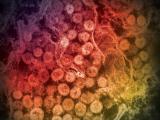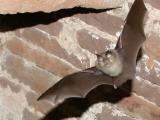Feb 21, 2013 (CIDRAP News) – A patient from Saudi Arabia died from a novel coronavirus (NCoV) infection, becoming the world's 13th case and seventh death, the World Health Organization (WHO) reported today.
According to Saudi Arabia's Ministry of Health, the patient, whose sex, age, and clinical picture were not specified, was hospitalized on Jan 29 and died on Feb 10, the WHO said in a brief statement. NCoV was confirmed in a laboratory on Feb 18, but the agency did not specify the confirmatory test used.
"Further investigation into this case is ongoing," the WHO added.
"Based on the current situation and available information, WHO encourages all Member States (MS) to continue their surveillance for severe acute respiratory infections (SARI) and to carefully review any unusual patterns," the agency said in the statement.
"Testing for the NCoV should be considered in patients with unexplained pneumonias, or in patients with unexplained, severe, progressive or complicated respiratory illness not responding to treatment, particularly in persons traveling from or resident in areas of the world known to be affected."
The WHO said that any SARI clusters or any SARI in healthcare workers should be thoroughly investigated, adding, "WHO does not advise special screening at points of entry with regard to this event nor does it recommend that any travel or trade restrictions be applied."
NCoV is related to coronaviruses found in bats in a number of countries, but its source has not yet been identified. It is also related to the SARS (severe acute respiratory syndrome) virus, which spread internationally in 2002 and 2003 and killed about 900 people.
The 13 NCoV cases that have been confirmed since last year include 6 in Saudi Arabia (4 fatal), 2 in Jordan (both fatal), 2 in Qatari patients (one of whom is still being treated in a UK hospital), and a recent cluster of 3 patients in the United Kingdom that involved 1 death.
That three-person family cluster in the United Kingdom, however, may actually include a fourth case, according to a Canadian Press (CP) story today.
A WHO official said health officials suspect that a fourth relative who had a respiratory illness but was not tested until after she recovered was infected with NCoV as well and may have been the one who transmitted the virus to the third confirmed case, according to the story.
Additional evidence of person-to-person spread has some experts concerned, the CP reported. "It is certainly beginning to look concerning, given the obvious fact that there can be onward transmission," said Malik Peiris, PhD, a microbiologist at the University of Hong Kong who was closely involved in the SARS outbreak.
"It is somewhat reminiscent of the emergence of SARS in 2002."
Details from a Qatari case
In related news, German investigators today provided a uniquely detailed account of the Qatari case-patient who was treated in that country and has recovered.
Writing in Eurosurveillance, researchers from the country's Robert Koch Institute, the University of Bonn, and other organizations, said the man first started having SARI symptoms last Oct 5 but was not transferred to the lung specialty clinic in Germany until Oct 24.
The patient, from Doha, Qatar, owned a camel and goat farm on which several goats were ill with fevers before the man became ill. He said he had no direct contact with the goats but said he had eaten goat meat.
In addition, the man reported that a caretaker of his animals was hospitalized with a severe cough, and he had had contact with the caretaker.
The man was not diagnosed as having the disease until Nov 20, resulting in 120 in-hospital and 3 out-of-hospital contacts, the authors report. Also, because of the late diagnosis, tests, which were performed in December, were conducted 13 to 50 days after contact with the patient (median, 39 days).
The researchers said that they used a two-stage approach to testing 85 of the 123 total contacts, including 9 who had performed aerosol-generating procedures on the patient, 2 of whom developed acute respiratory illnesses.
None of the 85 contacts tested positive for NCoV via initial immunofluorescence assay followed by recombinant immunofluorescence assays and a NCoV-specific serum neutralization test.
The investigators conclude that the patient's infectiousness 20 days after symptom onset was low and that their two-stage testing approach "may be used as a template for similar situations."
Editorial consultant Martha W. Swain contributed to this story.
See also:
Feb 21 WHO statement
Feb 21 CP story
Feb 21 Eurosurvellance report
Feb 19 CIDRAP News story "British man dies from novel coronavirus infection"
Feb 15 CIDRAP News story "Third novel coronavirus infection reported in UK family"


















